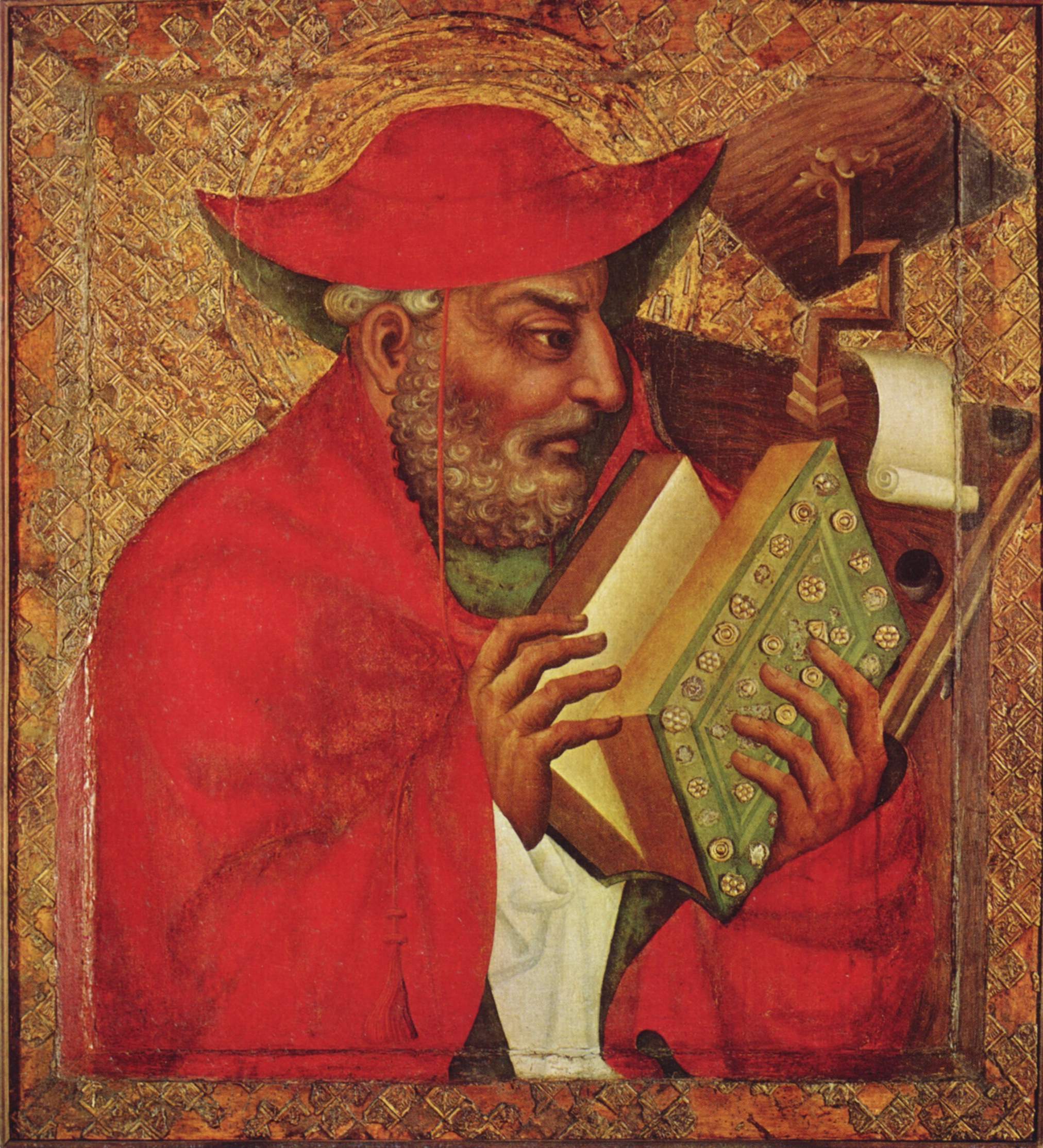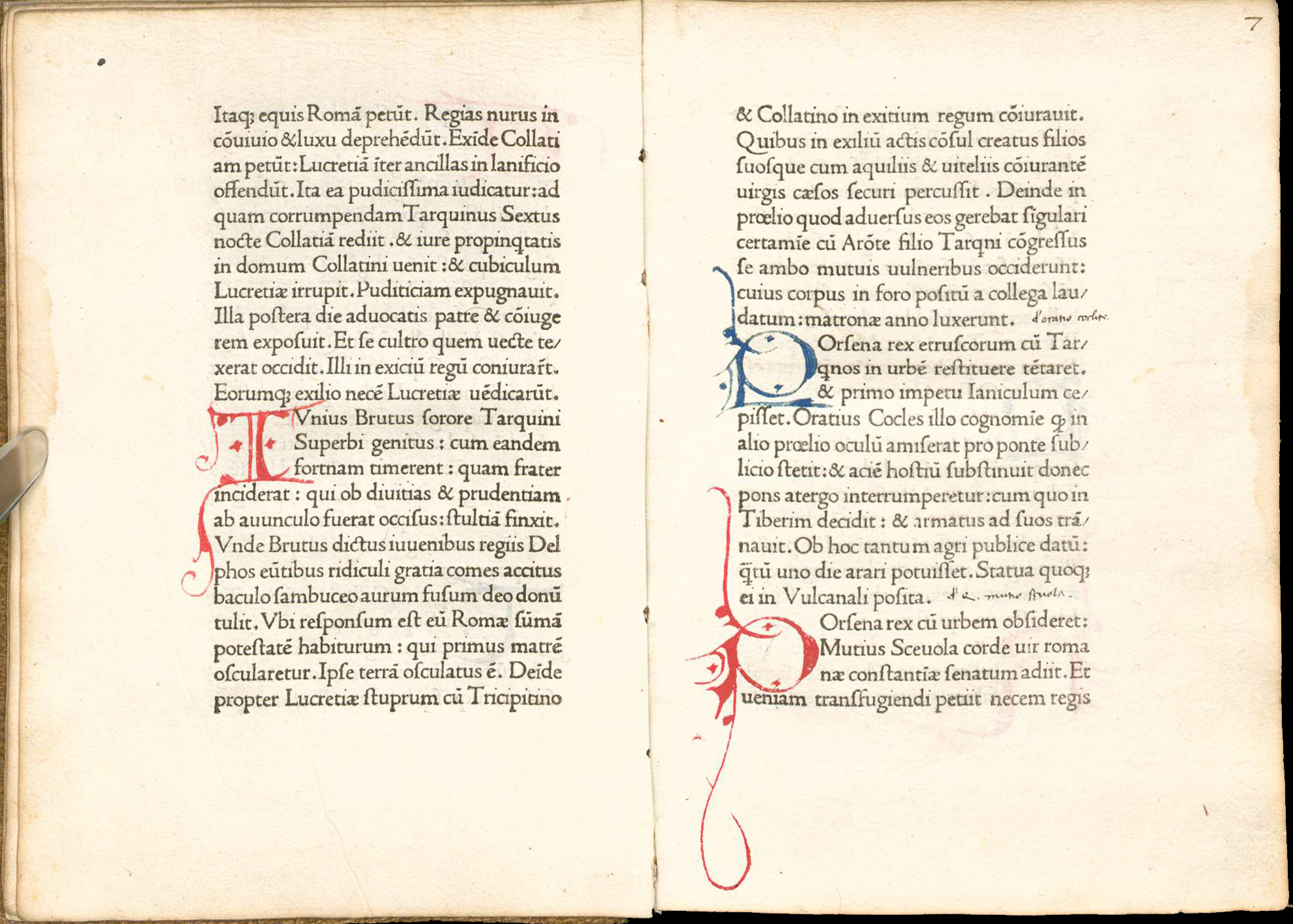|
Musanus
Musanus was an early Christian writer mentioned briefly by Eusebius in his Church History as the author of a book, extant in his time, against the Encratites. Jerome, probably based on Eusebius, also wrote about him in ''De Viris Illustribus ''De Viris Illustribus'', meaning "concerning illustrious men", represents a genre of literature which evolved during the Italian Renaissance in imitation of the exemplary literature of Ancient Rome. It inspired the widespread commissioning of g ...'' (c. 31 Musanus by Jerome). References {{Authority control Year of birth unknown Year of death unknown Christian writers ... [...More Info...] [...Related Items...] OR: [Wikipedia] [Google] [Baidu] |
De Viris Illustribus (Jerome)
''De Viris Illustribus'' (''On Illustrious Men'') is a collection of short biographies of 135 authors, written in Latin, by the 4th-century Latin Church Father Jerome. He completed this work at Bethlehem in 392–393 AD. The work consists of a prologue plus 135 chapters, each consisting of a brief biography. Jerome himself is the subject of the final chapter. A Greek version of the book, possibly by the same Sophronius who is the subject of Chapter 134, also survives. Many biographies take as their subject figures important in Christian Church history and pay especial attention to their careers as writers. It "was written as an apologetic work to prove that the Church had produced learned men." The book was dedicated to Flavius Lucius Dexter, who served as high chamberlain to Theodosius I and as praetorian prefect to Honorius. Dexter was the son of Saint Pacianus, who is eulogized in the work. Contents Listed below are the subjects of Jerome's 135 biographies. The numb ... [...More Info...] [...Related Items...] OR: [Wikipedia] [Google] [Baidu] |
Eusebius
Eusebius of Caesarea (; grc-gre, Εὐσέβιος ; 260/265 – 30 May 339), also known as Eusebius Pamphilus (from the grc-gre, Εὐσέβιος τοῦ Παμφίλου), was a Greek historian of Christianity, exegete, and Christian polemicist. In about AD 314 he became the bishop of Caesarea Maritima in the Roman province of Syria Palaestina. Together with Pamphilus, he was a scholar of the biblical canon and is regarded as one of the most learned Christians during late antiquity. He wrote ''Demonstrations of the Gospel'', '' Preparations for the Gospel'' and ''On Discrepancies between the Gospels'', studies of the biblical text. As "Father of Church History" (not to be confused with the title of Church Father), he produced the ''Ecclesiastical History'', ''On the Life of Pamphilus'', the ''Chronicle'' and ''On the Martyrs''. He also produced a biographical work on Constantine the Great, the first Christian Roman emperor, who was ''augustus'' between AD 306 and A ... [...More Info...] [...Related Items...] OR: [Wikipedia] [Google] [Baidu] |
Church History (Eusebius)
The ''Church History'' ( grc-gre, Ἐκκλησιαστικὴ ἱστορία; la, Historia Ecclesiastica or ''Historia Ecclesiae'') of Eusebius, the bishop of Caesarea was a 4th-century pioneer work giving a chronological account of the development of Early Christianity from the 1st century to the 4th century. It was written in Koine Greek, and survives also in Latin, Syriac and Armenian manuscripts. Church history The result was the first full-length historical narrative written from a Christian point of view. In the early 5th century, two advocates in Constantinople, Socrates Scholasticus and Sozomen, and a bishop, Theodoret of Cyrrhus, Syria, wrote continuations of Eusebius' church history, establishing the convention of continuators that would determine to a great extent the way history was written for the next thousand years. Eusebius' ''Chronicle'', which attempted to lay out a comparative timeline of pagan and Old Testament history, set the model for the other histo ... [...More Info...] [...Related Items...] OR: [Wikipedia] [Google] [Baidu] |
Encratites
The Encratites ("self-controlled") were an ascetic 2nd-century sect of Christians who forbade marriage and counselled abstinence from meat. Eusebius says that Tatian was the author of this heresy. It has been supposed that it was these Gnostic Encratites who were chastised in the epistle of 1 Timothy (4:1-4). Early history The first mention of a Christian sect of this name occurs in Irenæus. They are mentioned more than once by Clement of Alexandria, who says that they are named from "Temperance". Hippolytus of Rome refers to them as "acknowledging what concerns God and Christ in like manner with the Church; in respect, however, of their mode of life, passing their days inflated with pride"; "abstaining from animal food, being water-drinkers and forbidding to marry"; "estimated Cynics rather than Christians". On the strength of this passage it is supposed that some Encratites were perfectly orthodox in doctrine, and erred only in practice. Origen says they did not acknowledge St ... [...More Info...] [...Related Items...] OR: [Wikipedia] [Google] [Baidu] |
Jerome
Jerome (; la, Eusebius Sophronius Hieronymus; grc-gre, Εὐσέβιος Σωφρόνιος Ἱερώνυμος; – 30 September 420), also known as Jerome of Stridon, was a Christian presbyter, priest, Confessor of the Faith, confessor, theologian, and historian; he is commonly known as Saint Jerome. Jerome was born at Stridon, a village near Emona on the border of Dalmatia (Roman province), Dalmatia and Pannonia. He is best known for his translation of the Bible into Latin (the translation that became known as the Vulgate) and his commentaries on the whole Bible. Jerome attempted to create a translation of the Old Testament based on a Hebrew version, rather than the Septuagint, as Vetus Latina, Latin Bible translations used to be performed before him. His list of writings is extensive, and beside his biblical works, he wrote polemical and historical essays, always from a theologian's perspective. Jerome was known for his teachings on Christian moral life, especially to th ... [...More Info...] [...Related Items...] OR: [Wikipedia] [Google] [Baidu] |
De Viris Illustribus
''De Viris Illustribus'', meaning "concerning illustrious men", represents a genre of literature which evolved during the Italian Renaissance in imitation of the exemplary literature of Ancient Rome. It inspired the widespread commissioning of groups of matching portraits of famous men from history (''Uomini Famosi'') to serve as moral role models. With its inception in the circle of Cicero, various ancient works bear the titles ''De Viris Illustribus'' or ''De hominibus illustribus'', including: * Cornelius Nepos' ''De Viris Illustribus'', from which Aulus Gellius draws an anecdote of Cato the Elder; Cornelius Nepos also produced a ''Liber De Excellentibus Ducibus Gentium'' (Lives of Eminent Commanders). * Suetonius' fragmentary ''Lives'' include grammarians, rhetoricians, historians, and poets. * An anonymous ''De Viris Illustribus'' probably dating to the first half of the 4th century is a compilation of 86 brief biographies of individuals important to Roman history, from ... [...More Info...] [...Related Items...] OR: [Wikipedia] [Google] [Baidu] |
Year Of Birth Unknown
A year or annus is the orbital period of a planetary body, for example, the Earth, moving in its orbit around the Sun. Due to the Earth's axial tilt, the course of a year sees the passing of the seasons, marked by change in weather, the hours of daylight, and, consequently, vegetation and soil fertility. In temperate and subpolar regions around the planet, four seasons are generally recognized: spring, summer, autumn and winter. In tropical and subtropical regions, several geographical sectors do not present defined seasons; but in the seasonal tropics, the annual wet and dry seasons are recognized and tracked. A calendar year is an approximation of the number of days of the Earth's orbital period, as counted in a given calendar. The Gregorian calendar, or modern calendar, presents its calendar year to be either a common year of 365 days or a leap year of 366 days, as do the Julian calendars. For the Gregorian calendar, the average length of the calendar year ( ... [...More Info...] [...Related Items...] OR: [Wikipedia] [Google] [Baidu] |
Year Of Death Unknown
A year or annus is the orbital period of a planetary body, for example, the Earth, moving in its orbit around the Sun. Due to the Earth's axial tilt, the course of a year sees the passing of the seasons, marked by change in weather, the hours of daylight, and, consequently, vegetation and soil fertility. In temperate and subpolar regions around the planet, four seasons are generally recognized: spring, summer, autumn and winter. In tropical and subtropical regions, several geographical sectors do not present defined seasons; but in the seasonal tropics, the annual wet and dry seasons are recognized and tracked. A calendar year is an approximation of the number of days of the Earth's orbital period, as counted in a given calendar. The Gregorian calendar, or modern calendar, presents its calendar year to be either a common year of 365 days or a leap year of 366 days, as do the Julian calendars. For the Gregorian calendar, the average length of the calendar year (the mea ... [...More Info...] [...Related Items...] OR: [Wikipedia] [Google] [Baidu] |



